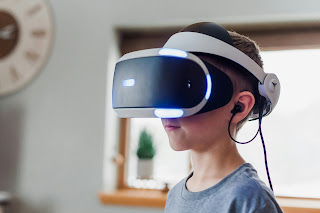Augmented Reality (AR) and Virtual Reality (VR) are immersive technologies that alter our perception of the real world. Here's a brief overview of each:
- Augmented Reality (AR):
- AR overlays advanced data onto this present reality climate, upgrading the client's impression of the real world.
- AR can be experienced through smartphones, tablets, AR glasses, or specialized AR headsets.
- Applications include gaming, navigation, education, retail, and industrial training.
- Popular examples of AR include Pokémon GO, Snapchat filters, and navigation apps that superimpose directions onto the real world.
- Virtual Reality (VR):
- VR creates a completely artificial, computer-generated environment that immerses the user in a digital world.
- VR experiences are typically delivered through VR headsets, which cover the user's eyes and ears, blocking out the physical surroundings.
- VR is widely used in gaming, simulations, virtual travel, and training scenarios (e.g., flight simulators, medical training).
- Prominent VR devices include the Oculus Rift, HTC Vive, and PlayStation VR.
Both AR and VR have transformative potential across various industries:
- Education: AR and VR can enhance learning experiences by providing immersive simulations and interactive educational content.
- Healthcare: VR is used for medical training, surgery simulations, and therapeutic applications. AR can aid surgeons by providing real-time information during procedures.
- Gaming: VR offers an incredibly immersive gaming experience, while AR enhances real-world gaming interactions.
- Enterprise: Both AR and VR find applications in enterprise settings for training, virtual collaboration, and data visualization.
- Retail: AR can enable virtual try-ons for clothing and accessories, while VR can create virtual shopping environments.
The development of AR and VR technologies continues, with ongoing efforts to improve hardware, software, and content creation. As these technologies advance, we can expect them to become more integrated into our daily lives, offering new ways to interact with information, entertainment, and each other.






0 Comments